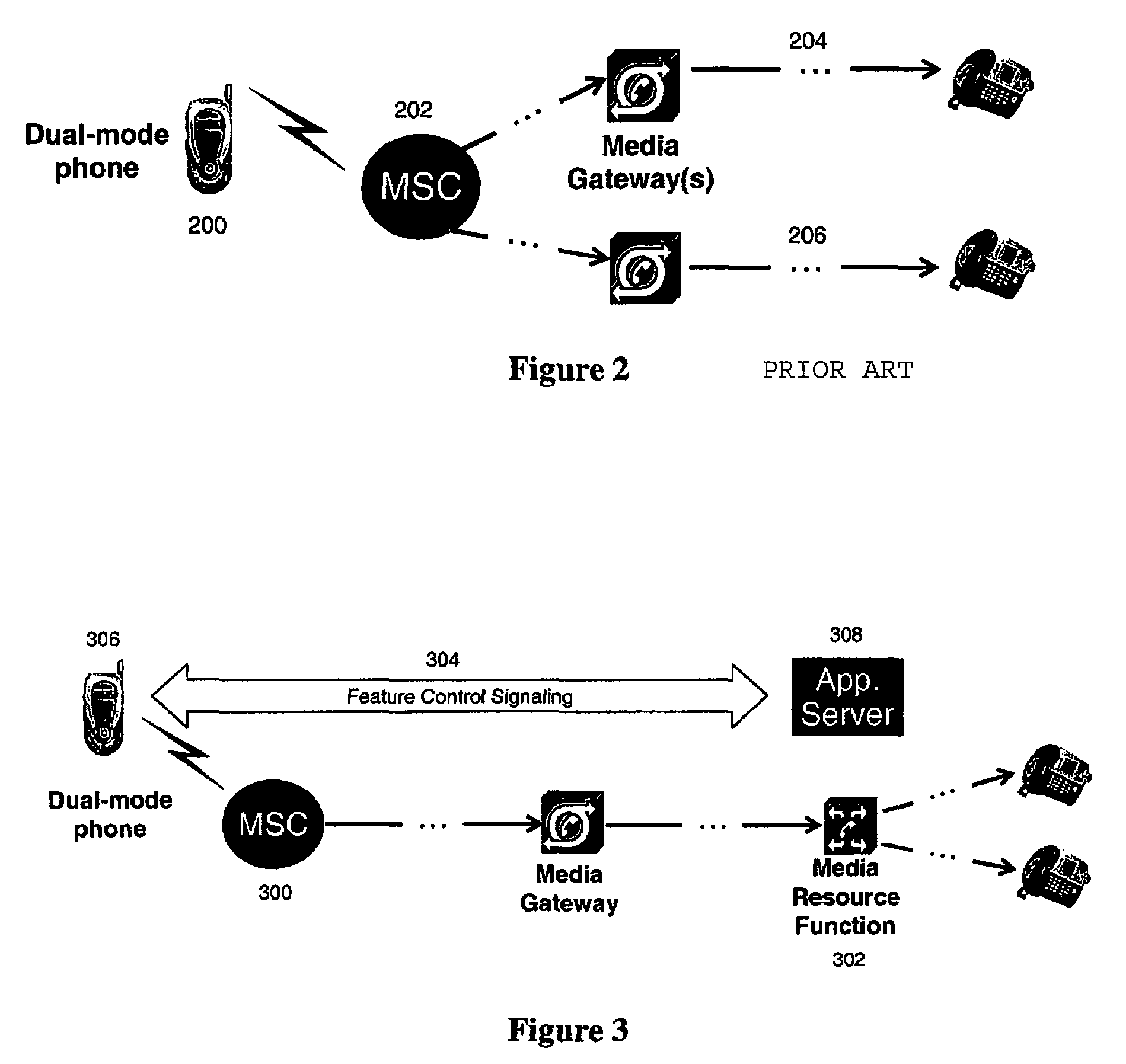Wireless intelligent network (WIN) support for centralized service control in an IP multimedia subsystem (IMS) network
a multimedia subsystem and wireless intelligent technology, applied in the field of telecommunications networks, can solve the problems of complex processing, difficult to transfer the current cs connection and call-state information to the ims domain, and further complicated, and achieve the effect of facilitating the migration path
- Summary
- Abstract
- Description
- Claims
- Application Information
AI Technical Summary
Benefits of technology
Problems solved by technology
Method used
Image
Examples
Embodiment Construction
[0033]The proposed approach to enable feature control signaling between a user handset and a network-based service platform (when the user handset is served by CS access) is based on the use of Wireless Intelligent Network (WIN) technology. Current WIN standards do not include support for any mid-call triggers. Thus, a ‘conventional’ IN approach for supporting the delivery of mid-call feature-related signaling from the handset to a network-based service platform is not available. Also, the continued expansion of WIN capabilities on existing MSCs is not generally favored, given the current emphasis on more forward-looking IMS technologies for deployment of advanced services, so the addition of mid-call triggers in future WIN standards is unlikely to be pursued. The present invention provides a mechanism for supporting such mid-call feature-related signaling.
[0034]The solution is broken down into two separable mechanisms. The first mechanism addresses how to allow the user to send fea...
PUM
 Login to View More
Login to View More Abstract
Description
Claims
Application Information
 Login to View More
Login to View More - R&D
- Intellectual Property
- Life Sciences
- Materials
- Tech Scout
- Unparalleled Data Quality
- Higher Quality Content
- 60% Fewer Hallucinations
Browse by: Latest US Patents, China's latest patents, Technical Efficacy Thesaurus, Application Domain, Technology Topic, Popular Technical Reports.
© 2025 PatSnap. All rights reserved.Legal|Privacy policy|Modern Slavery Act Transparency Statement|Sitemap|About US| Contact US: help@patsnap.com



